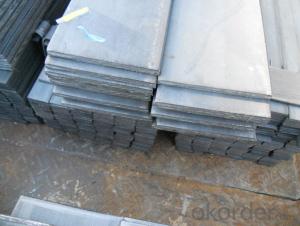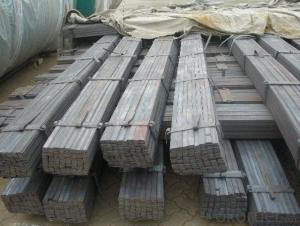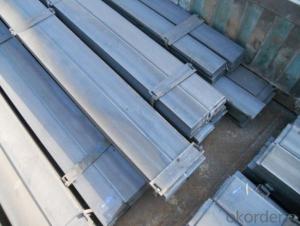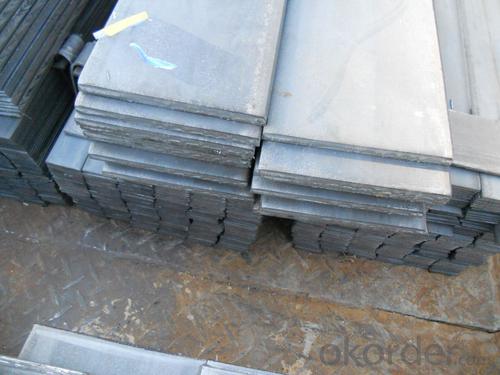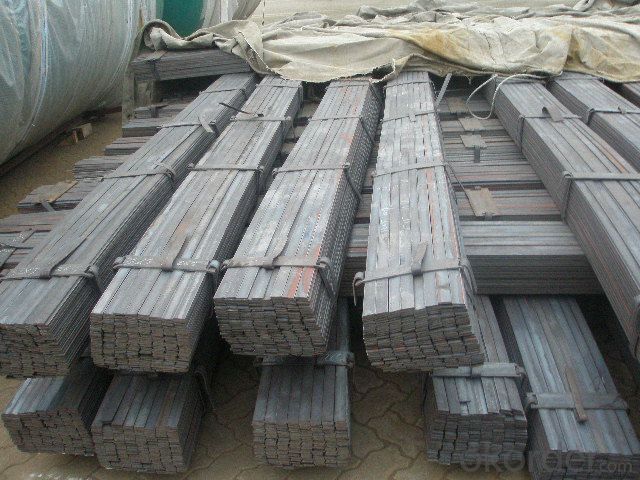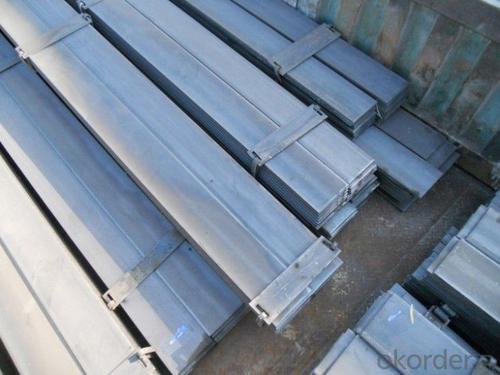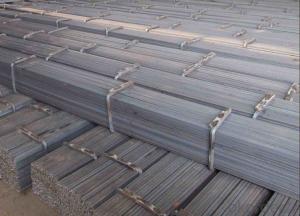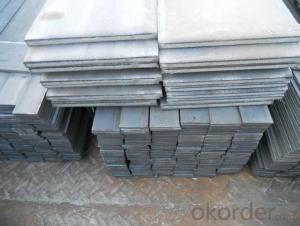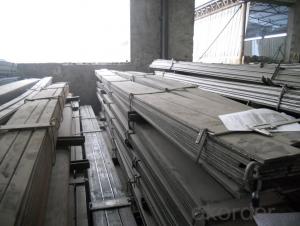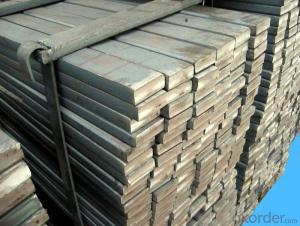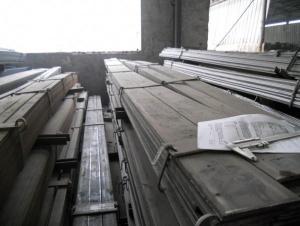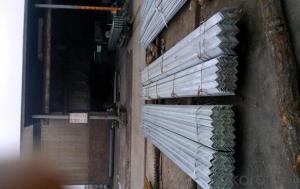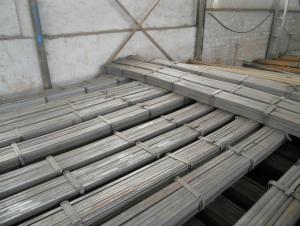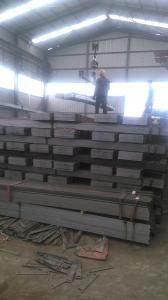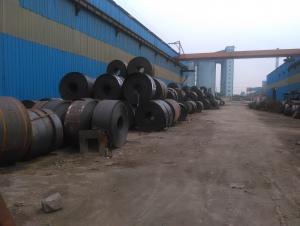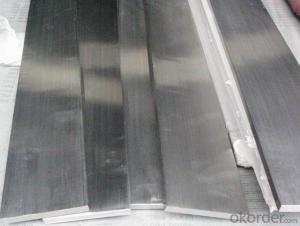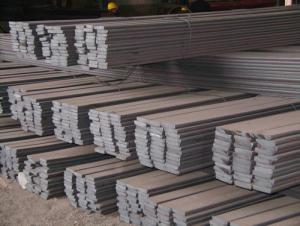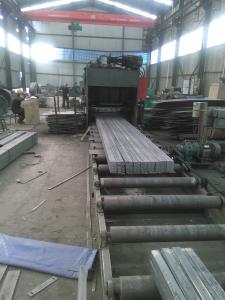Hot Rolled Steel Flat Bar with Good Price
- Loading Port:
- Tianjin
- Payment Terms:
- TT OR LC
- Min Order Qty:
- 25 m.t.
- Supply Capability:
- 10000 m.t./month
OKorder Service Pledge
OKorder Financial Service
You Might Also Like
Product Description:
OKorder is offering high quality Slit Cutting Flat Bar at great prices with worldwide shipping. Our supplier is a world-class manufacturer of steel, with our products utilized the world over. OKorder annually supplies products to European, North American and Asian markets. We provide quotations within 24 hours of receiving an inquiry and guarantee competitive prices.
Product Applications:
Slit Cutting Flat Bars are ideal for structural applications and are widely used in the construction of buildings and bridges, and the manufacturing, petrochemical, and transportation industries.
Product Advantages:
OKorder's Slit Cutting Flats Barare durable, strong, and resist corrosion.
Main Product Features:
· Premium quality
· Prompt delivery & seaworthy packing (30 days after receiving deposit)
· Corrosion resistance
· Can be recycled and reused
· Mill test certification
· Professional Service
· Competitive pricing
Product Specifications:
Manufacture: Slit Cutting
Grade: Q195 – 235
Certificates: ISO, SGS, BV, CIQ
Length: 6m – 12m, as per customer request
Packaging: Export packing, nude packing, bundled
Chemical composition of Q235
Alloy No | Grade | Element(%) | ||||
C
| Mn
| S
| P
| Si
| ||
Q235
|
B
|
0.12—0.20 |
0.3—0.7 |
≤0.045 |
≤0.045
|
≤0.3
|
Physical properties of Q235
Alloy No | Grade | Yielding strength point(Mpa) | Tensile strength (Mpa) | Elongation after fracture(%) | ||||||
Thickness (mm) | Thickness (mm) | |||||||||
≤16 | >16--40 | >40--60 | >60--100 | ≤16 | >16--40 | >40--60 | >60--100 | |||
≥ | ≥ | |||||||||
Q235 |
B |
235 |
225 |
215 |
205 |
375--500 |
26 |
25 |
24 |
23 |
FAQ:
Q1: How soon can we receive the product after purchase?
A1: Within three days of placing an order, we will begin production. The specific shipping date is dependent upon international and government factors, but is typically 7 to 10 workdays.
Q2: How do we guarantee the quality of our products?
A2: We have established an advanced quality control system which conducts strict quality tests at every step, from raw materials to the final products. At the same time, we provide extensive follow-up service assurances as required.
Q3: The products are invoicing on theoritical weight or actual weight?
A3: We can do it in both manners, it 's according to the customers' requirements.
Images:
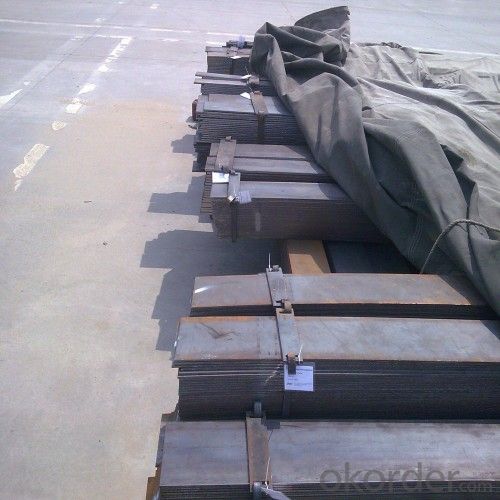
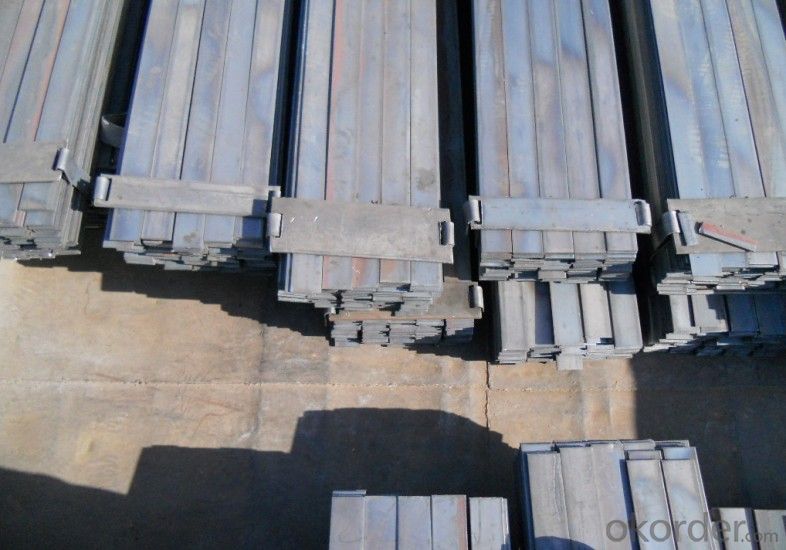
- Q: Can steel flat bars be used for making stair treads or steps?
- Yes, steel flat bars can be used for making stair treads or steps. Steel is a strong and durable material that can provide stability and support for staircases. Flat bars can be easily fabricated and shaped to create treads or steps that are both functional and aesthetically pleasing. Additionally, steel's resistance to corrosion makes it suitable for outdoor or high-traffic areas where stairs are commonly found. However, it is important to consider the thickness and dimensions of the steel flat bars to ensure they can withstand the expected load and meet the necessary safety standards.
- Q: What is the yield strength of a steel flat bar?
- The yield strength of a steel flat bar refers to the amount of stress or force that the steel can withstand before it starts to deform permanently. It is an important mechanical property that indicates the maximum load the steel can bear without experiencing plastic deformation. The yield strength of a steel flat bar can vary depending on the grade and type of steel used. Generally, common grades of steel used in flat bars have yield strengths ranging from 36,000 to 80,000 pounds per square inch (psi) or 250 to 550 megapascals (MPa). However, it is important to note that these values can vary and may also depend on factors such as the manufacturing process and any additional treatments or alloys used in the steel. Therefore, it is crucial to consult the specific specifications or testing data provided by the manufacturer or supplier to accurately determine the yield strength of a particular steel flat bar.
- Q: Can steel flat bars be used for making molds or tooling fixtures?
- Yes, steel flat bars can be used for making molds or tooling fixtures. Steel flat bars are known for their strength, durability, and resistance to wear and tear. These characteristics make them ideal for creating molds or tooling fixtures that require stability and longevity. Additionally, steel flat bars can be easily machined and shaped into the desired form, making them versatile for various mold or fixture designs. Overall, steel flat bars are a reliable choice for constructing molds or tooling fixtures due to their robust nature and ability to withstand the demands of manufacturing processes.
- Q: Can steel flat bars be used for manufacturing conveyor systems?
- Yes, steel flat bars can be used for manufacturing conveyor systems. Steel flat bars are commonly used in the construction industry due to their strength, durability, and versatility. These characteristics make them suitable for various applications, including the manufacturing of conveyor systems. Steel flat bars can be used as supports, frames, or guide rails in conveyor systems, providing stability and ensuring smooth movement of materials. Additionally, steel is resistant to corrosion, which is crucial in environments where the conveyor system may come into contact with moisture or chemicals. Overall, steel flat bars are a reliable and efficient choice for manufacturing conveyor systems.
- Q: What is the standard tolerance for steel flat bars?
- The standard tolerance for steel flat bars can vary depending on the specific industry standards and requirements. However, in general, the standard tolerance for steel flat bars is typically expressed in terms of its thickness, width, and length dimensions. For the thickness dimension, the standard tolerance can range from +/- 0.005 inches to +/- 0.010 inches, depending on the manufacturing process and the specific grade of steel being used. This ensures that the thickness of the flat bar is within an acceptable range and meets the required specifications. Similarly, for the width dimension, the standard tolerance can range from +/- 0.010 inches to +/- 0.020 inches. This accounts for any slight variations in the width of the flat bar, ensuring that it remains within the acceptable range for its intended use. Lastly, the standard tolerance for the length dimension of steel flat bars can vary between +/- 0.125 inches to +/- 0.250 inches. This allows for minor variations in the length of the flat bar, ensuring that it meets the required specifications without compromising its functionality. It is important to note that these are general guidelines, and the specific tolerance requirements may vary depending on the application and industry standards. It is always recommended to consult the appropriate standards or specifications for the specific steel flat bar being used to ensure compliance and accuracy.
- Q: Are steel flat bars commonly used in the construction of educational institutions?
- Steel flat bars are frequently utilized in the construction of educational institutions. Their popularity in construction projects stems from the numerous advantages they offer. Primarily, steel is a robust and long-lasting material, ensuring the structural integrity and longevity of buildings. This is particularly crucial in educational institutions where safety is of utmost importance. Additionally, steel flat bars can be easily fabricated and tailored to meet specific design requirements. They can be manipulated through cutting, bending, and welding to create various shapes and sizes, making them adaptable for different construction purposes. Educational buildings often utilize steel flat bars as support beams, lintels, and framing components. Moreover, steel is an environmentally friendly choice for construction projects as it is a sustainable material that can be recycled. This aligns with the growing emphasis on sustainability and green building practices in educational institutions. Furthermore, steel flat bars possess exceptional fire-resistant properties, providing an extra layer of safety. In the event of a fire, steel does not contribute to the spread of flames, which is crucial in educational buildings where large numbers of people gather. In conclusion, the combination of strength, versatility, sustainability, and fire resistance makes steel flat bars a widely employed material in the construction of educational institutions.
- Q: What is the cost of a steel flat bar?
- The cost of a steel flat bar can vary depending on various factors such as the size, grade, and quantity needed. It is best to check with local suppliers or online retailers to get an accurate price. Prices can range from a few dollars to several hundred dollars per bar.
- Q: What are the different methods of cutting steel flat bars?
- There are several different methods of cutting steel flat bars, each with its own advantages and applications. 1. Sawing: One of the most common methods of cutting steel flat bars is using a saw. There are several types of saws that can be used, including band saws, circular saws, and abrasive saws. Band saws are ideal for cutting larger quantities of steel bars quickly and efficiently, while circular saws are more suitable for smaller jobs or cutting through thicker bars. Abrasive saws, also known as cutoff saws, use a rotating abrasive disc to cut through the steel. 2. Shearing: Shearing is another popular method for cutting steel flat bars. It involves using a shear machine that applies a significant amount of force to cut through the material. Shearing is particularly useful for cutting through thick steel bars, as the force applied allows for a clean, straight cut. 3. Plasma cutting: Plasma cutting is a more advanced method that uses a high-velocity jet of ionized gas to melt and cut through the steel. This method is highly precise and allows for intricate shapes and designs to be cut, making it suitable for more complex cutting requirements. 4. Laser cutting: Similar to plasma cutting, laser cutting utilizes a high-powered laser beam to melt and cut through the steel. This method is incredibly accurate and can produce clean, smooth cuts. Laser cutting is often used for cutting thin steel flat bars or for precise, intricate designs. 5. Waterjet cutting: Waterjet cutting utilizes a high-pressure jet of water mixed with abrasive particles to cut through the steel. This method is versatile and can cut through a wide range of materials, including steel. It is particularly useful for cutting through thicker steel bars or for materials that may be sensitive to heat. Overall, the choice of cutting method depends on factors such as the thickness of the steel, the desired precision, and the complexity of the design. Each method has its own advantages and limitations, so it is important to consider these factors when selecting the appropriate cutting method for steel flat bars.
- Q: Can steel flat bars be used for making stairs or handrails?
- Yes, steel flat bars can be used for making stairs or handrails. Steel is a durable and strong material, making it suitable for constructing stairs and handrails that can withstand heavy use and provide support. Steel flat bars can be shaped and welded to create the desired design and structure for stairs and handrails. Additionally, steel can be finished with various coatings or paints to enhance its aesthetic appeal and protect it from corrosion. Overall, steel flat bars are a popular choice for making stairs and handrails due to their strength, versatility, and durability.
- Q: What is the maximum length available for steel flat bars?
- The maximum length available for steel flat bars can vary depending on the supplier and manufacturer. However, in general, steel flat bars are commonly produced in standard lengths of 20 feet or 6 meters. These lengths are widely available and suitable for a wide range of applications. Additionally, it is worth noting that some suppliers may offer custom cutting services, allowing customers to request specific lengths according to their project requirements.
Send your message to us
Hot Rolled Steel Flat Bar with Good Price
- Loading Port:
- Tianjin
- Payment Terms:
- TT OR LC
- Min Order Qty:
- 25 m.t.
- Supply Capability:
- 10000 m.t./month
OKorder Service Pledge
OKorder Financial Service
Similar products
Hot products
Hot Searches
Related keywords
